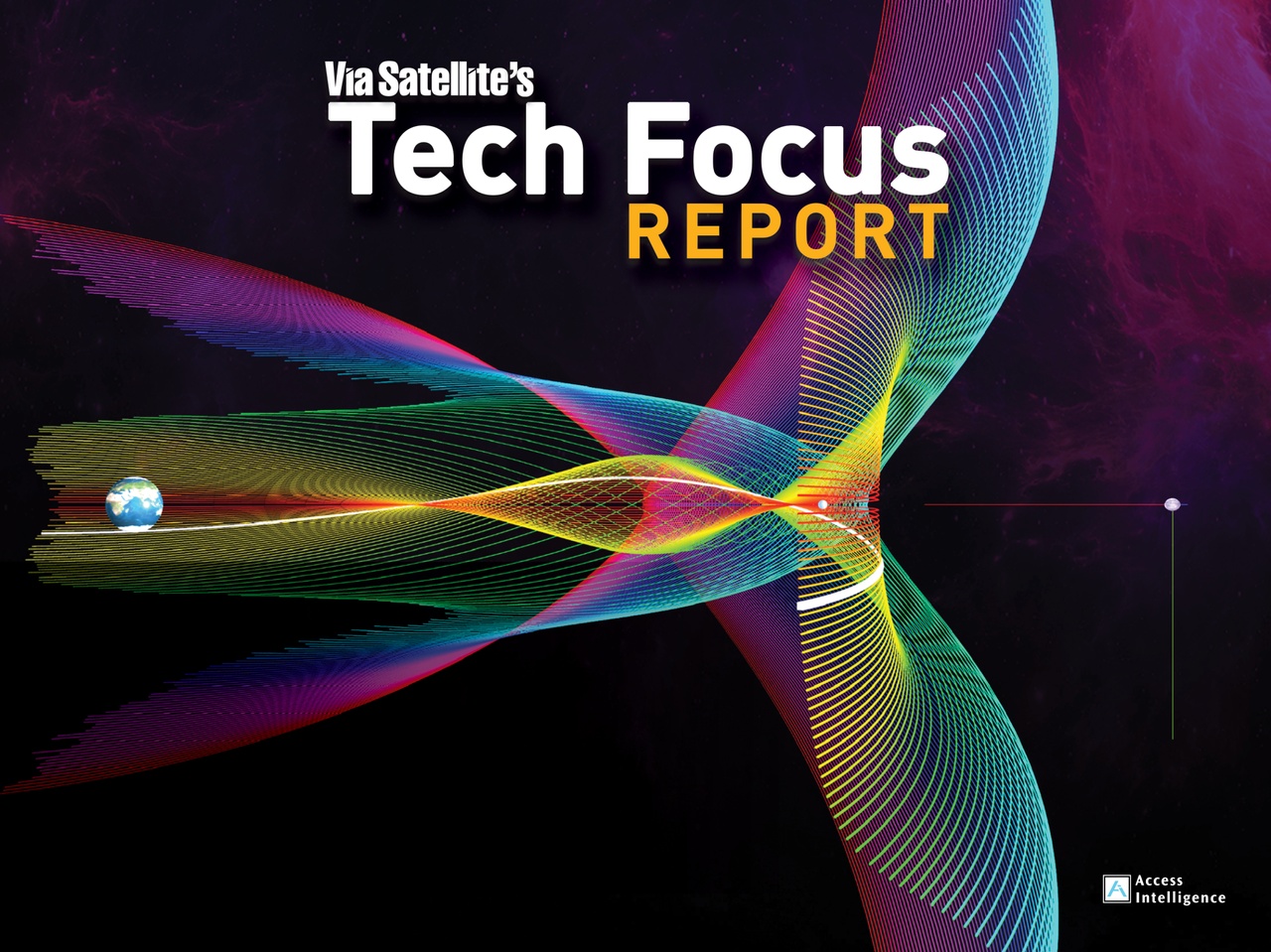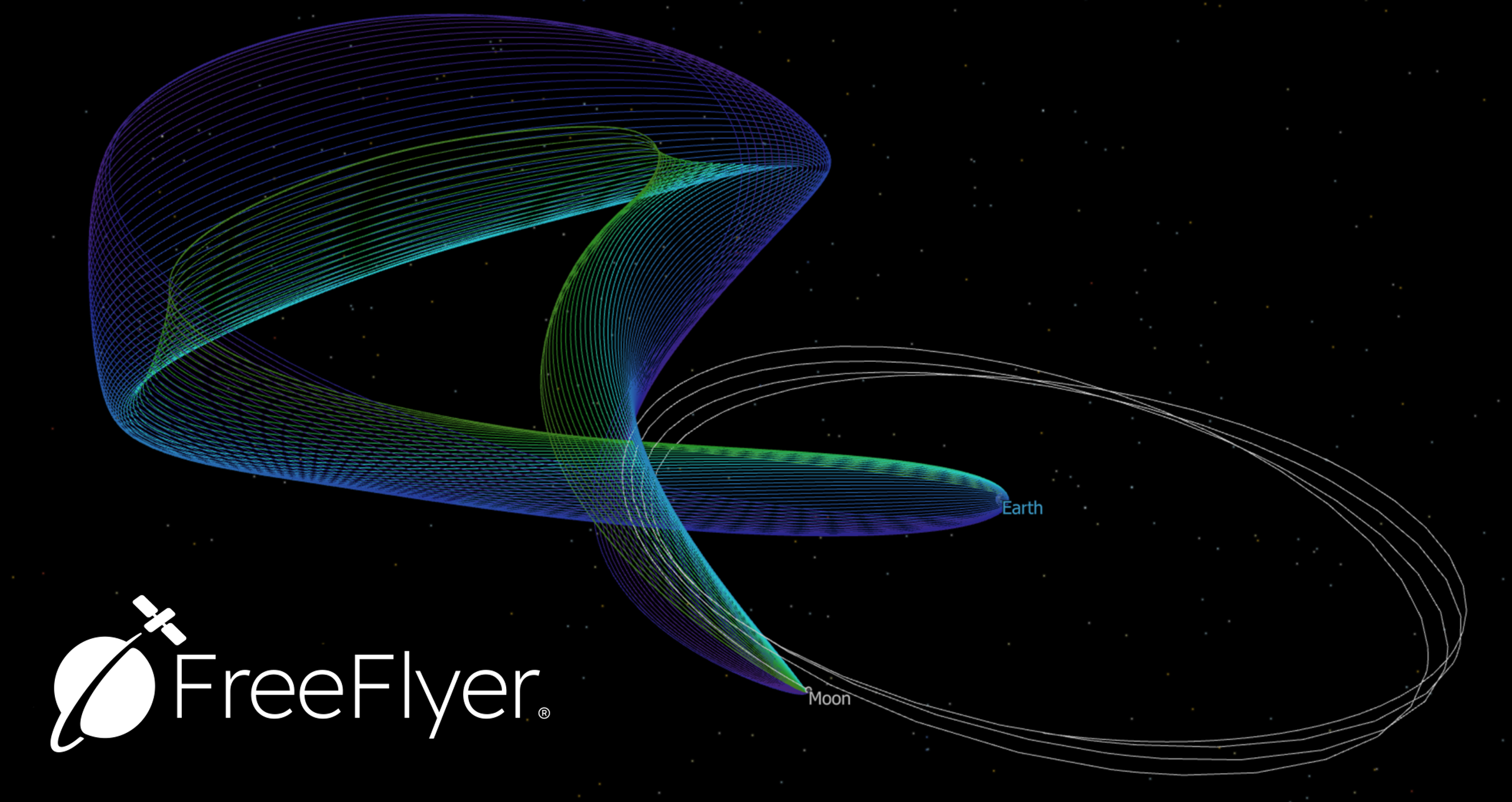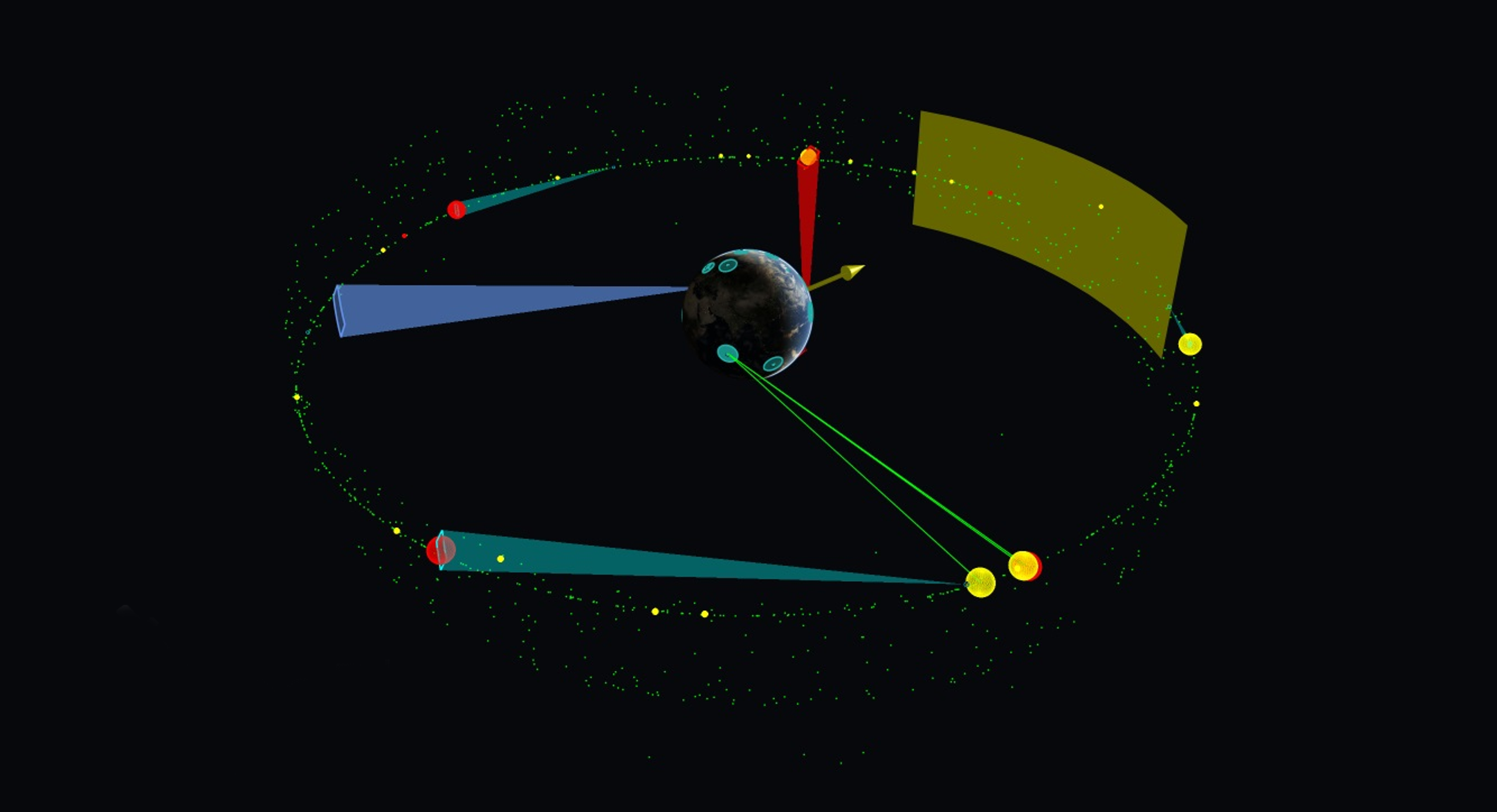
Breaking New Ground in Deep Space with FreeFlyer® Astrodynamics Software
FreeFlyer is a Commercial off-the-shelf (COTS) high-performance astrodynamics tool that handles mission planning and analysis across all orbit regimes — from LEO to cislunar space and beyond.March 28th, 2025
Commercial enterprises and government space agencies are preparing to significantly increase their presence in cislunar space. A key challenge in this expansion is understanding how to navigate and exploit the complex orbital dynamics that govern this region for effective mission design. Dr. Brian McCarthy of a.i. solutions® is at the forefront of tackling this challenge. Since completing his Ph.D. in astrodynamics, Dr. McCarthy has shaped the mission design for projects such as the lunar Gateway, the Orion crew vehicle, commercial lunar landers, and cislunar Space Situational Awareness (SSA) applications. His ongoing research is essential in advancing space technology and shaping the future of exploration in cislunar space.
Dr. McCarthy's recent talk at the AAS/AIAA Space Flight Mechanics meeting focused on sustainable operations in cislunar space to avoid collisions and manage congestion. Given the complicated dynamics in cislunar, coordination and path planning strategies must be carefully considered to ensure safety within this regime. To effectively and efficiently analyze these strategies, it is critical to use trusted software tools. Dr. McCarthy uses FreeFlyer® to design control strategies and simulate vehicle paths in cislunar space to inform his analysis. FreeFlyer provides the necessary functions, such as high-fidelity orbit propagation, maneuver optimization, and orbit determination for this complex cislunar regime.
In addition to his work with cislunar traffic management, Dr. McCarthy works on trajectory design for the Artemis campaign. One key question is how to leverage cislunar dynamics to rapidly construct abort paths in the event of an anomaly during an Artemis mission. To design abort options, Dr. McCarthy leverages FreeFlyer to unlock insights into the design space and wrangle sensitive orbits. FreeFlyer provides features to assess the fundamental dynamics of the three-body problem and transition them into real-world designs.
Dr. McCarthy and the a.i. solutions team possess a wealth of experience in designing, analyzing, and operating a wide array of missions to our closest celestial neighbor. Their work spans a diverse range of projects, including lunar landers, robotic orbiters, crewed vehicles, and cislunar SSA/SDA missions. Driven by their expert insights and innovative approaches, they are able to provide cutting edge space mission design and analysis software solutions to the industry. Tools like FreeFlyer help to break new ground in deep space mission design and pave the way for increasingly ambitious space exploration missions.
FreeFlyer is a Commercial off-the-shelf (COTS) high-performance astrodynamics tool that handles mission planning and analysis across all orbit regimes — from low Earth orbit (LEO) to cislunar space and beyond. It provides a robust set of capabilities tailored for both routine satellite operations and cutting-edge space exploration efforts. With a heritage of over 250 satellite missions, customizable interfaces, and easy integration into modern ground system architectures, FreeFlyer supports the full lifecycle of your mission.

High-Fidelity Orbit Propagation
- Complete high-fidelity orbit integration, force modeling, and ephemeris features
- Accurately model spacecraft trajectories using a variety of force models, from simple two-body motion to full n-body perturbations, solar radiation pressure, and atmospheric drag.
- Formation, constellation, and debris catalog modeling supporting an unlimited number of space objects.
Maneuver Modeling
- Simulate and optimize orbital maneuvers, including station-keeping operations, collision avoidance, and drag makeup maneuvers.
- Support for standard chemical and low-thrust propulsion systems.
- Maneuver targeting with differential correction algorithms.
Optimization
- Solve problems related to trajectory design, maneuver planning, and more.
- Multi-Objective Optimization with integer programming and Pareto front dominance.
- Minimize or maximize any objective function.
- Support for optimal control using segmented trajectory arcs.
- Built-in support for Ipopt, Nlopt, and SNOPT engines.
Orbit Determination
- Process tracking data to refine spacecraft states using an Extended Kalman Filter, Unscented Kalman Filter, Square Root Information Filter, or Batch Least Squares.
- Natively read and write tracking data formats including BRTS, DSN, GNSS, TDRS, Point Solution, Ground Station, and Spacecraft observations.
Communications & Coverage Analysis
- Analyze RF and Optical link budgets, generate visibility windows, and optimize coverage for ground stations and relay satellites.
- Calculate the start/stop times and duration of contact events down to nanosecond-level accuracy.
- Terrain modeling to aid in ground-based analyses with critical space or air assets.
Interactive Environment
- Develop, visualize, and iterate mission simulations with an intuitive scripting interface.
- Full-featured scripting editor with general programming convenience including script auto-complete, logic control, and an integrated debugger.

FreeFlyer is trusted by organizations around the world and has been a key component in high-profile missions:
LEO:
International Space Station (ISS) – Powers planning and operational support for various ISS activities including Orbit Determination and Conjunction Assessment.
Space-Based Space Surveillance (SBSS) – Integral in tracking and analyzing objects in orbit for military applications.
Sierra Space Dream Chaser – FreeFlyer and Meridian are the backbone of the operational flight dynamics ground system. FreeFlyer and Atlas provide a heads-up display for Mission Control.
USGS Landsat Fleet – FreeFlyer provides orbit determination, maneuver planning, and orbit products for all Landsat missions. Landsat 8 and 9 are flown using Meridian.
MEO:
USSF GPS Constellation – LADO – Powers the GPS Launch & Early Orbit, Anomaly Resolution, and Disposal (GPS LADO) ground system.
GEO:
NOAA GOES Fleet – FreeFlyer has provided analysis support dating back to GOES-N/O/P, and powers the launch, ascent, and early orbit Flight Dynamics System for GOES-R/S/T/U.
HEO/BEO:
James Webb Space Telescope (JWST) – FreeFlyer computes all orbital maneuvers for JWST from launch through stationkeeping.
NASA Gateway – NASA and its contractors are using FreeFlyer for trajectory analysis, modeling maneuvers in and out of near-rectilinear halo orbit (NRHO), and modeling attitude for power and communications planning.
Orion Crew Vehicle - In addition to Gateway, FreeFlyer is being used to analyze the trajectories options and operate Orion to deliver astronauts to the Moon for all missions during the Artemis campaign.

Digging Deeper:
ObsSIM is a physics-based simulation tool powered by FreeFlyer to generate realistic simulated space surveillance sensor observations. By emulating both ground and space-based sensors, including those of the U.S. Space Surveillance Network (SSN), allied nations, and commercial networks, ObsSIM enables essential testing, training, and exercises in space domain awareness that would not otherwise be possible.
Operators need to be ready for anything. ObsSIM's complete library of space events, from launch to re-entry, allows test designers to construct any scenario any scenario in today's congested and contested space environment
Why FreeFlyer?
Flexibility – A powerful scripting language allows fully customized analysis, automation, and optimization.
Performance – Designed to handle large-scale constellations and complex mission scenarios efficiently.
Affordability – A cost-effective solution without compromising on capability.
Extensive Support & Documentation– A responsive support team and comprehensive documentation ensure users can maximize FreeFlyer’s potential.






